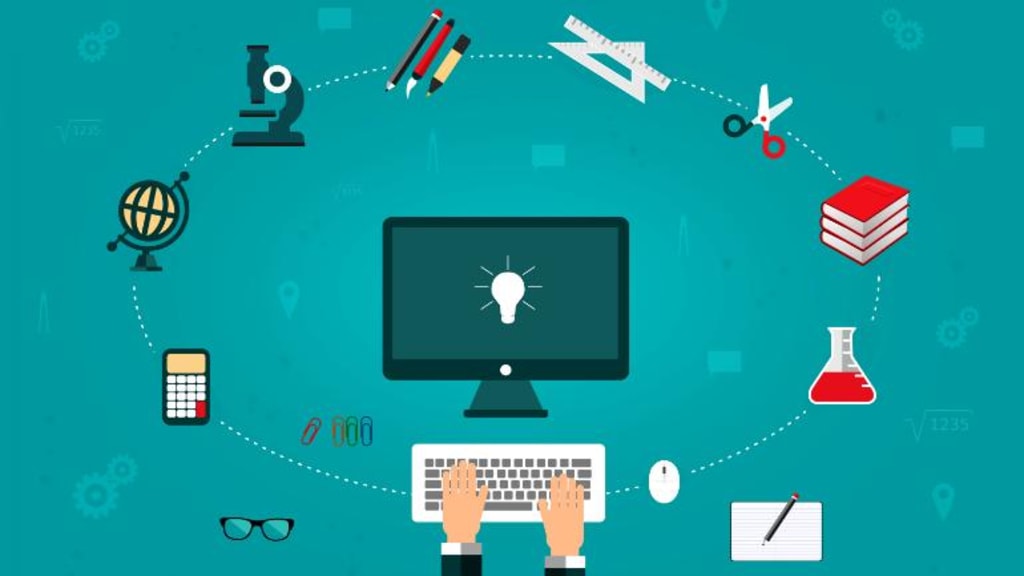Integrating learning into your daily tasks.
Daily tasks.

Lifelong learning is now recognised as an economic necessity as automation, artificial intelligence, and new work models reshape the business sector. The need for new talents, according to 80% of CEOs, is their largest corporate concern today. Opportunities for development are now the second-most significant determinant in employees' workplace happiness, according to study.
We are a neotenic species at our most basic level, born with an innate need to learn throughout our lives. It follows that our ongoing search for methods to improve our job makes sense; in fact, the growth-mindset movement was founded on this human urge.
But the necessity of employment always outweighs the luxury of education. Employees waste a third of their workday on emails that are unrelated to their professions, according to a research we just conducted with LinkedIn.
Except for mandated compliance training, the typical corporate learning portal (the learning management system) is rarely used, and it frequently requires numerous clicks to get what you need. As a result, learning is ultimately consigned to Eisenhower's 22 matrix's important-but-not-urgent quadrant, both consciously and unconsciously. Knowledge workers devote just five minutes per day, on average, to formal education. Simply put, we're all too mired in the relentless flow of work.
Therefore, the question is: How can we integrate learning into the strong flow of the everyday workflow? Josh invented the phrase "learning in the flow of work," and we think there is a solution.
What exactly does the work flow entail?
Of course, everyone's work experience is unique, but knowledge workers generally share the following characteristics: They number 780 million and spend 6.5 hours each day in front of a computer. Specifically, they spend 28% of their time using email, 19% of their time finding information (looking for data), and 14% of their time interacting with each other (in formal and informal meetings). These three tasks taken together account for 61 percent of the entire time spent at work by this sizable population.
It makes reasonable that knowledge professionals would invest so much time in learning new material and sharing it with others. For the majority of us, finding data, facts, knowledge, and insights—and then imparting them to others—represent daily activities. In actuality, educational or informative content makes up 38% of all internet sharing.
Learning while doing your job is a novel concept that acknowledges that learning must fit around and complement working days and working lives in order to truly occur. Corporate learning is no more something we conceive of as a destination, but rather as something that comes to us. We can create experiences and solutions that make learning virtually invisible in our work through sound design thinking and cutting-edge technology. One may contend that Google and YouTube were among the first "learning in the flow" platforms, which we today consider standard.
How therefore might we use the work flow to promote learning? We'll first examine this from a personal (bottom-up) standpoint before examining it from a corporate perspective (top-down).
Bottom-Up Education-
What may a person with a thirst for knowledge do to learn while doing their work? Here are some useful actions you might take right now:
Practice metacognition and mindfulness.
As you go about your regular tasks, be conscious and present. One of the numerous advantages of this is a greater capacity for learning and growth. Don't just watch that negotiation with the procurement expert, for instance; actively participate in it and observe and study her strategies. Ask salespeople about market trends, product managers about product features, and peers for comments on your presenting abilities. These kinds of questions are educational opportunities, and most of your peers like sharing their knowledge with you.
Maintain a to-learn list.
Every day, you come across a variety of learning opportunities, and if you practise metacognition, you'll become more aware of them. Because you're preoccupied with something else, you frequently have to let them go at this time. However, that does not imply that you should blow this chance. Make a list of the ideas, words, behaviours, and language you want to investigate, add them to your list, and bookmark them in your browser.
When you have some time to think, you can subsequently investigate them. Josh, like many people, is constantly bookmarking things he wants to learn. When he has a free minute (typically late at night when he is exhausted), he reads the article, checks out the demo, or simply messes around and experiments with something he's always wanted to get better at. We all have moments (including commutes) when it just feels like the correct thing to do. It's a unique and fulfilling feeling.
Use tech-enabled tips as you work.
Technical hints from Google Docs' Explore feature, for example, can assist with context-relevant research or formatting or analysis recommendations. This form of inline guidance has developed greatly since the initial days of the famed Microsoft Office assistant, the animated paper clip, “Clippy”. However, in order to benefit from such advice, you must be receptive to it. As Slack and Microsoft Teams become more widely used at work, there will be a lot more in the future.
Top-Down Education.
Nearly two-thirds of HR leaders who are asked how they intend to develop new talents for the future say they would go out and recruit for the necessary new abilities. This is pricey: one of our clients discovered that developing technical abilities internally is six times less expensive than seeking them out elsewhere.
So how can businesses utilise the work flow more effectively to enhance employee skill development? Naturally, many of the traits of large organisations hinder learning, but others can be used to spark it. Business executives who are prepared to alter systems, procedures, and culture in order to improve the capabilities of their employees should pay particular attention to this area.
About the Creator
Paramjeet kaur
Hey people! I am my own person and I love blogging because I just love to share the small Stories






Comments
There are no comments for this story
Be the first to respond and start the conversation.